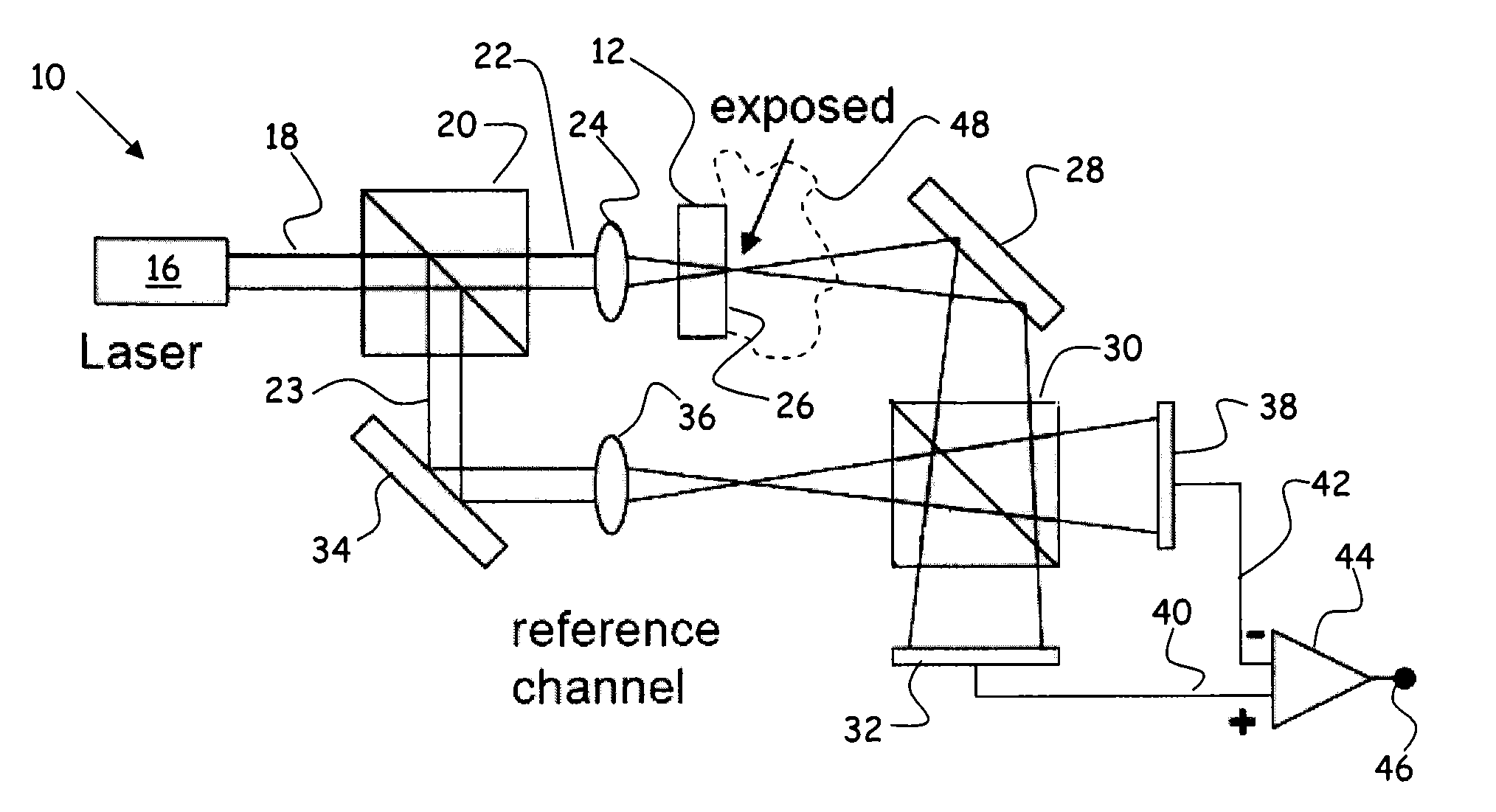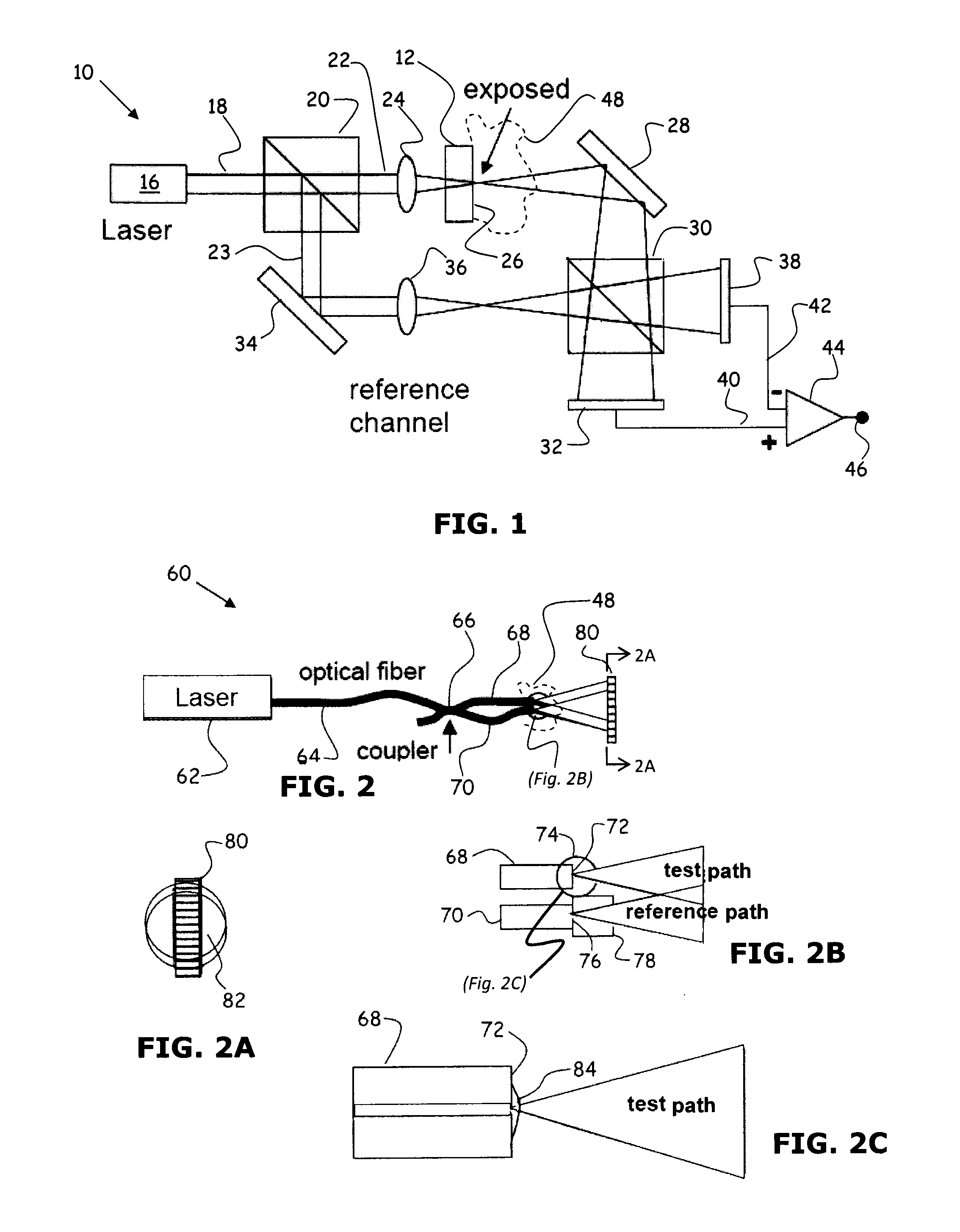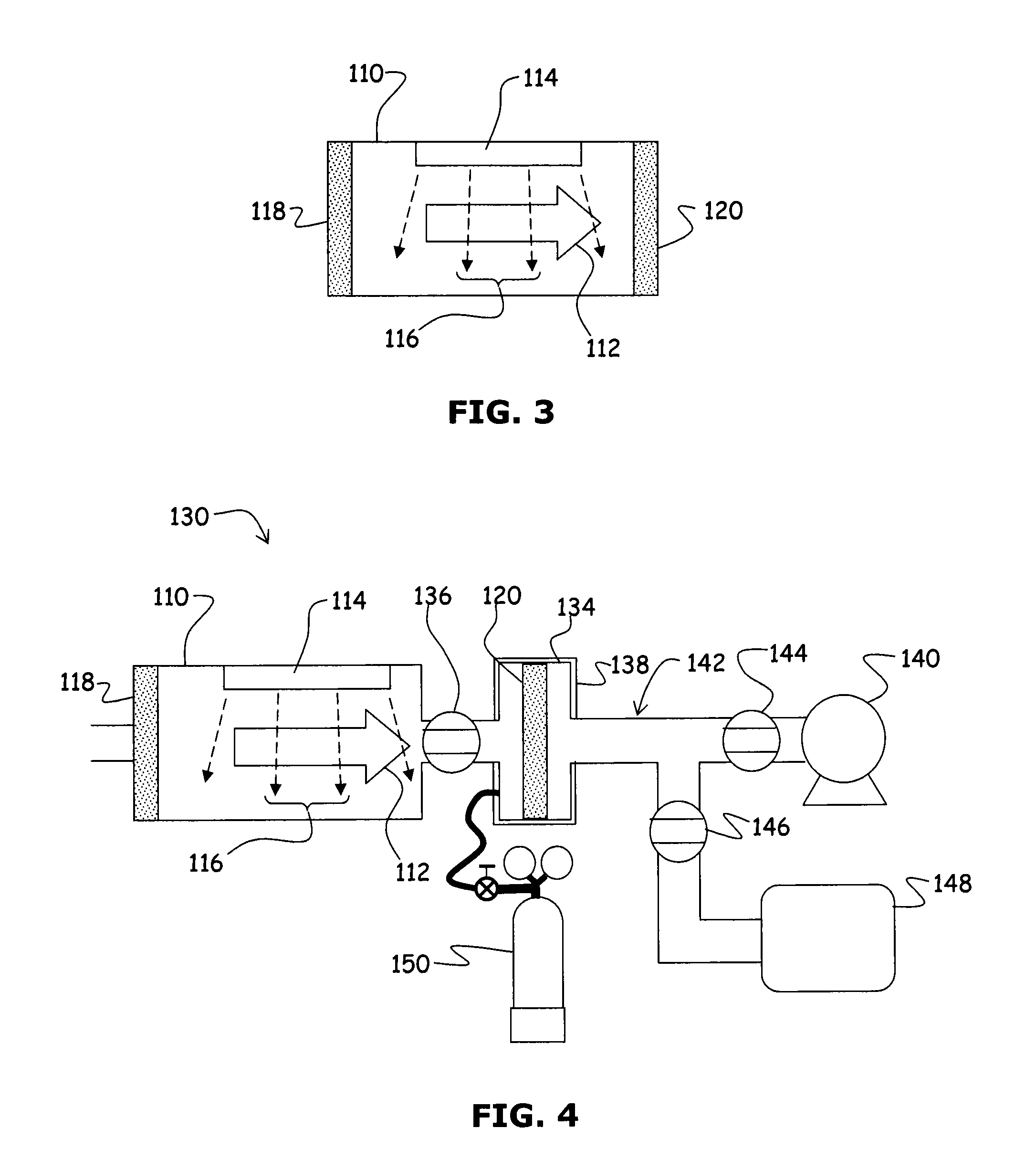Methods and apparatus for detecting airborne molecular contaminants
a technology of airborne molecular contaminants and methods, applied in the direction of mass spectrometers, instruments, separation processes, etc., can solve the problems of difficult to use almost any analytical technique to investigate the composition of contaminated substances and thus trace their origin, lack of knowledge of what contaminants will form deposits, and sophisticated and expensive analytical techniques. to achieve the effect of improving sensitivity
- Summary
- Abstract
- Description
- Claims
- Application Information
AI Technical Summary
Benefits of technology
Problems solved by technology
Method used
Image
Examples
Embodiment Construction
[0044]Referring to FIG. 1, a Mach-Zender type interferometric system 10 including a substrate element 12 for gathering deposits from airborne molecular contaminants (AMCs) is depicted in an embodiment of the invention. The interferometric system 10 includes an electromagnetic source 16 (in this case a laser) that propagates a primary beam 18 of electromagnetic radiation at a substantially monochromatic wavelength. In this embodiment, the primary beam 18 is routed through a beam splitter 20 that splits the primary beam 18 into a test beam 22 and a reference beam 23. The test beam 22 is routed through a set of optical components comprising a focusing optic 24 and the substrate element 12, the focusing optic 24 focusing the test beam 22 at a measuring surface 26 of the substrate element 12. The test beam 22 can be routed via a redirecting optic 28 through a second beam splitter 30 before being subtended by a test beam detector 32.
[0045]Likewise, the reference beam 23 can be routed thro...
PUM
| Property | Measurement | Unit |
|---|---|---|
| diameter | aaaaa | aaaaa |
| diameter | aaaaa | aaaaa |
| optical path length | aaaaa | aaaaa |
Abstract
Description
Claims
Application Information
 Login to View More
Login to View More - R&D
- Intellectual Property
- Life Sciences
- Materials
- Tech Scout
- Unparalleled Data Quality
- Higher Quality Content
- 60% Fewer Hallucinations
Browse by: Latest US Patents, China's latest patents, Technical Efficacy Thesaurus, Application Domain, Technology Topic, Popular Technical Reports.
© 2025 PatSnap. All rights reserved.Legal|Privacy policy|Modern Slavery Act Transparency Statement|Sitemap|About US| Contact US: help@patsnap.com



